It looks like you're using an Ad Blocker.
Please white-list or disable AboveTopSecret.com in your ad-blocking tool.
Thank you.
Some features of ATS will be disabled while you continue to use an ad-blocker.
9
share:
Were some royals really practicing witchcraft?
Was a pact with the devil for some of them the secret to their great fortune?
I always thought, that some of them might have actually practiced witchcraft, but I'm theorizing here that most of these nobles were just simply falling out of their king's favor, and accusing them of witchcraft was a sure way to get rid of enemies without actually having to get your hands dirty.
Also back then if someone was considered too beautiful, or too lucky, that was also a reason to suspect them of sorcery, which I thought was interesting. Natural disasters or big storms happening before or during an important event like a wedding for example was also considered suspicious of witchcraft.
I did some research and put together a list of royals, who were on witch trials in England, and some more personal information on those people with interesting stories.
Please feel free to add more royals accused of using witchcraft to the list.
Enjoy.
Lady Margaret Douglas
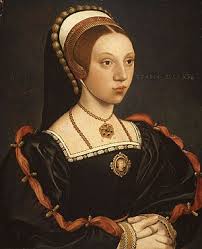
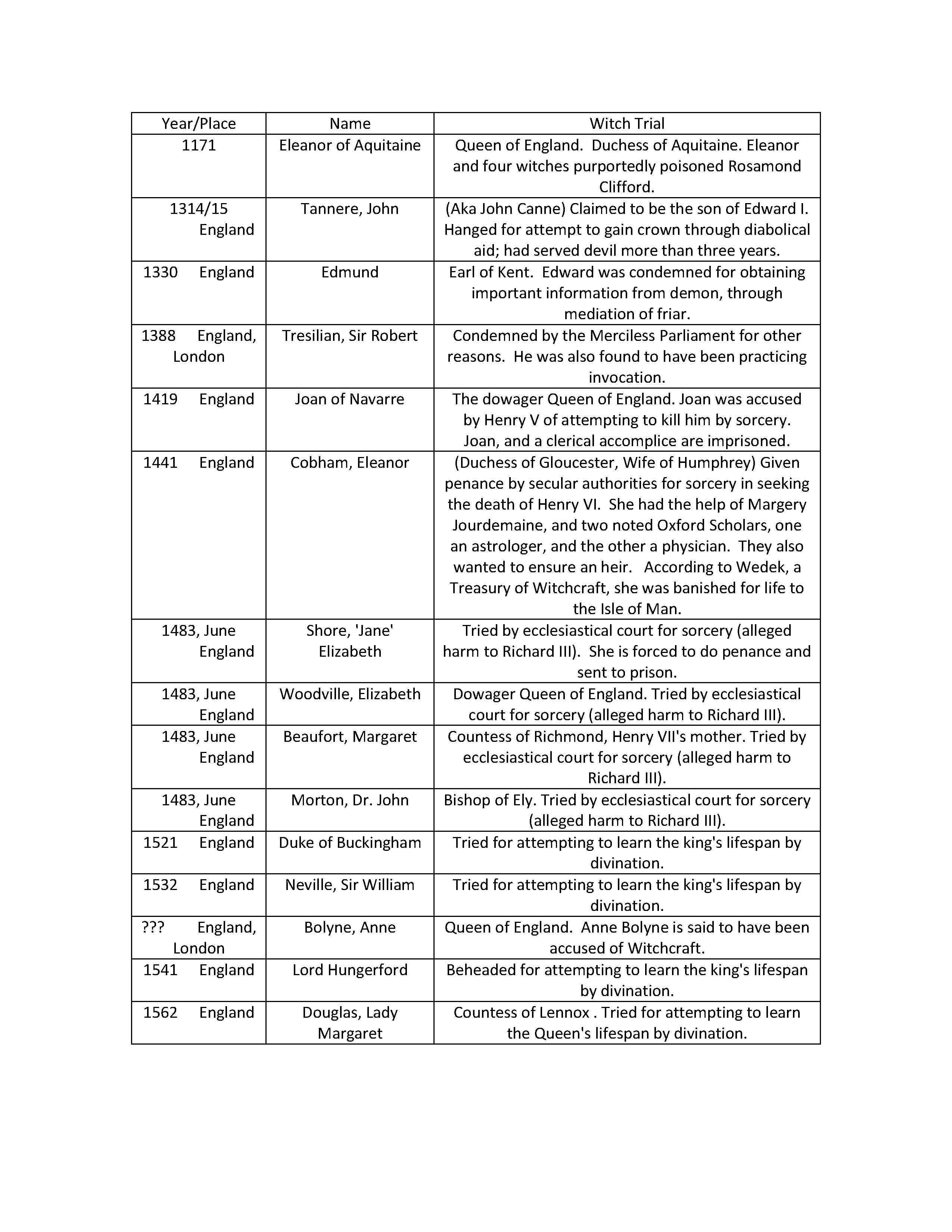
Eleanor of Aquitaine
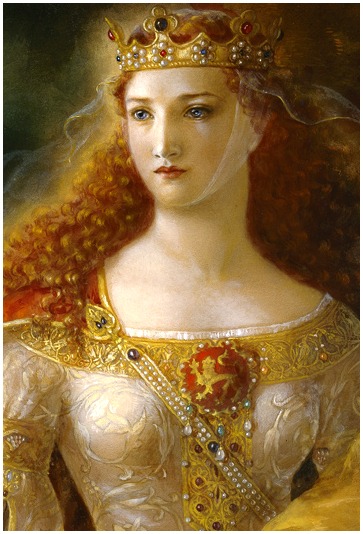
Source: www.sexualfables.com...
Eleanor Cobham
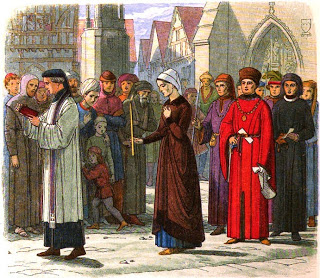
Source: historytimeshistory.blogspot.com...
Elizabeth Woodville
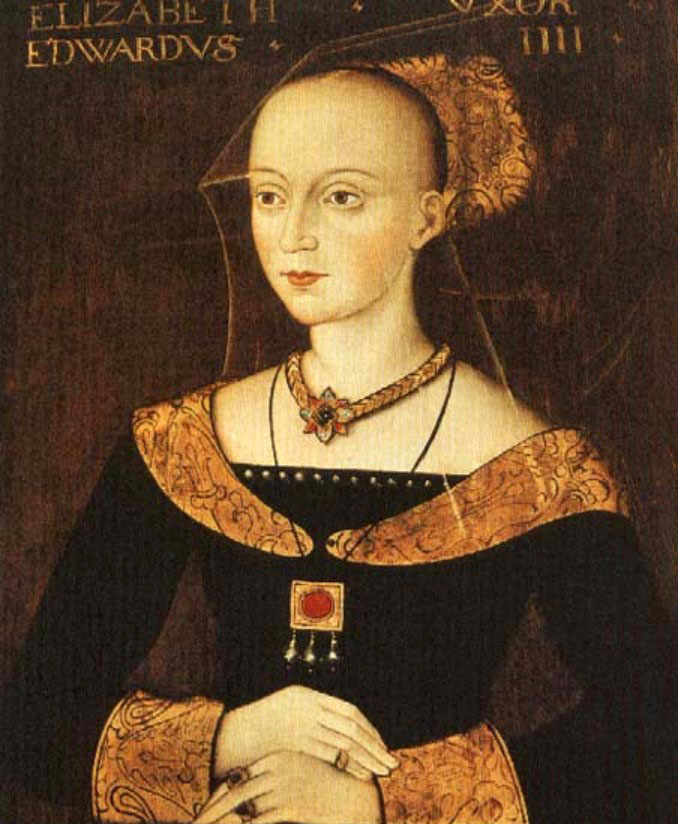
Source: www.bbc.co.uk...
Was a pact with the devil for some of them the secret to their great fortune?
I always thought, that some of them might have actually practiced witchcraft, but I'm theorizing here that most of these nobles were just simply falling out of their king's favor, and accusing them of witchcraft was a sure way to get rid of enemies without actually having to get your hands dirty.
Also back then if someone was considered too beautiful, or too lucky, that was also a reason to suspect them of sorcery, which I thought was interesting. Natural disasters or big storms happening before or during an important event like a wedding for example was also considered suspicious of witchcraft.
I did some research and put together a list of royals, who were on witch trials in England, and some more personal information on those people with interesting stories.
Please feel free to add more royals accused of using witchcraft to the list.
Enjoy.
Lady Margaret Douglas


Eleanor of Aquitaine

Crimes of passion are always difficult to explain, which is of course why they are so interesting. But how was it done back in the 12th century?
It was widely known at the time, throughout both England and France, that Henry was having an affair with young Rosamond de Clifford. Eleanor’s spies reported the goings-on to her in her castle at Poitiers, to which she had now retired. It seems that as the affair persisted, she became angrier, since Henry’s past affairs had never lasted long and this new infatuation appeared to be growing more intense. Eleanor decided to act, stealing into England with her knights, headed for Woodstock, where Henry had his mistress hidden away. The palace was deep in the forest and its approaches were constructed like a labyrinth designed to foil Eleanor, should she ever decide to do what she was doing now. Alas for Rosamond, a silk thread had become detached from a needlework chest that the King had given her for embroidery. Once the Queen discovered it, she was able to follow it to the heart of the labyrinth and surprise the young woman. The Queen’s soldiers quickly overpowered the single brave knight who was there to protect her and at last Eleanor confronted her nemesis. She offered Rosamond a choice between a dagger and a cup of poisoned wine. Rosamond apparently chose the poison and died, and that was the end of her, or so the story goes.
Source: www.sexualfables.com...
Eleanor Cobham

Have you heard of Eleanor Cobham, a woman from fairly humble origins who became a royal duchess and then lost everything when she was convicted of witchcraft? Back in the 15th century probably the last thing you would expect to find in the English royal family would be a witch. So you may be surprised to find that several royal ladies from this period were suspected of practising the dark arts, including Joan of Navarre who was accused by her son Henry V of plotting to use magic to kill him and Jacquetta Woodville who was said to have worked with her daughter Elizabeth to bring about her marriage to Edward IV by using sorcery and making lead images of the king.
But how does Eleanor Cobham qualify as a mystery person of history? Firstly there were the witchcraft charges brought against her. Was she really guilty of dabbling in the occult or was she set up by an opposing faction at court who wanted to undermine the influence her husband, Humphrey Duke of Gloucester, had over the young King Henry VI. Then there were the two illegitimate children of her royal husband, Arthur and Antigone Plantagenet. Was Eleanor Cobham their mother? If so why were they not legitimised after Eleanor and Humphrey of Gloucester married, as the Beauforts were when John of Gaunt married his long-time mistress Katherine Swynford?
Source: historytimeshistory.blogspot.com...
Elizabeth Woodville

When the White Queen, Elizabeth Woodville, became the first 'commoner' to marry an English king, some muttered she may have used magic to enchant him. Edward was said to be so enamoured with her beauty that he married her in secret, rather than wed a French princess.
However, it was Elizabeth's mother Jacquetta who was first accused of witchcraft.
Jacquetta Woodville
The White Queen's mother Jacquetta on trial for witchcraft
In February 1471, Edward IV had lost the English throne after the Earl of Warwick imprisoned him in his castle and reinstated Henry VI.
Warwick also executed Elizabeth's father, Earl Rivers. Shortly after, the now widowed Jacquetta was accused of witchcraft by one of Warwick's squires, Thomas Wake.
He brought a broken puppet made of lead to Warwick castle, and said Jacquetta had fashioned it in order to practise witchcraft. To support his allegation, he claimed that a parish clerk called John Daunger knew of two more images, one representing Edward, the other Elizabeth.
Source: www.bbc.co.uk...
reply to post by Rainbowresidue
What a great idea for a thread!
Have you heard of John Dee?
John Dee wiki
Queen Elizabeth 1st seems to have been very interested in these matters. Like you say though, accusations of witchcraft could be fatal, and a good way to get rid of any competition.
What a great idea for a thread!
Have you heard of John Dee?
John Dee (13 July 1527 – 1608 or 1609) was a mathematician, astronomer, astrologer, occultist, navigator, imperialist[5] and consultant to Queen Elizabeth I of Welsh[6] origin. He devoted much of his life to the study of alchemy, divination and Hermetic philosophy.
Dee straddled the worlds of science and magic just as they were becoming distinguishable. One of the most learned men of his age, he had been invited to lecture on advanced algebra at the University of Paris while still in his early twenties. Dee was an ardent promoter of mathematics and a respected astronomer, as well as a leading expert in navigation, having trained many of those who would conduct England's voyages of discovery.
Simultaneously with these efforts, Dee immersed himself in the worlds of magic, astrology and Hermetic philosophy. He devoted much time and effort in the last thirty years or so of his life to attempting to commune with angels in order to learn the universal language of creation and bring about the pre-apocalyptic unity of mankind. A student of the Renaissance Neo-Platonism of Marsilio Ficino, Dee did not draw distinctions between his mathematical research and his investigations into Hermetic magic, angel summoning and divination. Instead he considered all of his activities to constitute different facets of the same quest: the search for a transcendent understanding of the divine forms which underlie the visible world, which Dee called "pure verities".
In his lifetime Dee amassed one of the largest libraries in England. His high status as a scholar also allowed him to play a role in Elizabethan politics.
John Dee wiki
Queen Elizabeth 1st seems to have been very interested in these matters. Like you say though, accusations of witchcraft could be fatal, and a good way to get rid of any competition.
reply to post by beansidhe
If what I have read is correct, Dee was the mentor of Newton, and Newton was also heavily into the occult.
Essentially, modern science evolved from alchemy.
Here is an interesting link I found on the subject.
www.lindsayseers.info...
If what I have read is correct, Dee was the mentor of Newton, and Newton was also heavily into the occult.
Essentially, modern science evolved from alchemy.
Here is an interesting link I found on the subject.
www.lindsayseers.info...
reply to post by poet1b
I'm not quite sure, but I think (and I'm often wrong) but off the top of my head, I think Dee died just before Newton was born. I do know that a lot of people have said Newton was heavily influenced by Dee, as was Francis Bacon. He was a very interesting man, John Dee.
I'm going to read your link now (and find out I've just written a load of rubbish!)
Bx
I'm not quite sure, but I think (and I'm often wrong) but off the top of my head, I think Dee died just before Newton was born. I do know that a lot of people have said Newton was heavily influenced by Dee, as was Francis Bacon. He was a very interesting man, John Dee.
I'm going to read your link now (and find out I've just written a load of rubbish!)
Bx
reply to post by Rainbowresidue
First I have to point out that witchcraft and Satan are two different religions. So Satan doesn't have anything to do with witchcraft any more than Krishna has to do with Christianity.
That being said the early pagan religions of the Celts was the religion of Great Britain until the Romans came in. Some aspects of the early religion never died out.
Lady Elizabeth Woodville nee Grey who became Elizabeth the first when she married her second husband Edward the IV Did practice witchcraft according to historic records as did her mother Jaquetta of Luxemburg. It was believed that she and her mother cursed the house of York causing the death of the heir of Richard the III and his wife Lady Anne Neville. Her own sons were the fabled princes in the tower who disappeared never to be seen again. They were reportedly killed by either Anne or Richards decree. They were heirs to the throne ahead of Richards son. Their disappearance put Richards son ahead for the throne. According to legend Elizabeth and her mother cursed the house of York which left the way clear for another of Elizabeth's children Elizabeth the II to marry Henry Tudor or Henry the VI thus retaining the throne for her kin. .
First I have to point out that witchcraft and Satan are two different religions. So Satan doesn't have anything to do with witchcraft any more than Krishna has to do with Christianity.
That being said the early pagan religions of the Celts was the religion of Great Britain until the Romans came in. Some aspects of the early religion never died out.
Lady Elizabeth Woodville nee Grey who became Elizabeth the first when she married her second husband Edward the IV Did practice witchcraft according to historic records as did her mother Jaquetta of Luxemburg. It was believed that she and her mother cursed the house of York causing the death of the heir of Richard the III and his wife Lady Anne Neville. Her own sons were the fabled princes in the tower who disappeared never to be seen again. They were reportedly killed by either Anne or Richards decree. They were heirs to the throne ahead of Richards son. Their disappearance put Richards son ahead for the throne. According to legend Elizabeth and her mother cursed the house of York which left the way clear for another of Elizabeth's children Elizabeth the II to marry Henry Tudor or Henry the VI thus retaining the throne for her kin. .
reply to post by Rainbowresidue
On a side note Jane Shore a mistress of Edward IV May have also been cursed by Elizabeth Woodville because of her relationship with the King.
Elizabeth was never tried for witchcraft though her mother Jaquetta was . Jaquetta was cleared by calling her alliance with Margret of Anjou then displaced Queen of Henry Lancaster living in France at the time.
See THE WAR OF THE ROSES. Truth is often stranger than fiction.
On a side note Jane Shore a mistress of Edward IV May have also been cursed by Elizabeth Woodville because of her relationship with the King.
Elizabeth was never tried for witchcraft though her mother Jaquetta was . Jaquetta was cleared by calling her alliance with Margret of Anjou then displaced Queen of Henry Lancaster living in France at the time.
See THE WAR OF THE ROSES. Truth is often stranger than fiction.
edit on PMu31u0331008312014-03-09T12:08:39-05:00 by AutumnWitch657 because:
(no reason given)
reply to post by beansidhe
The British Museum have artifacts supposed to belong to Dr John Dee, they are on their website, l have tried on five separate occassions to see these. The gallery has been closed for cleaning, hours after the museum has opened, they are on loan elsewhere, the gallery is closed for refurbishment, seem to be excuses every time.
The British Museum have artifacts supposed to belong to Dr John Dee, they are on their website, l have tried on five separate occassions to see these. The gallery has been closed for cleaning, hours after the museum has opened, they are on loan elsewhere, the gallery is closed for refurbishment, seem to be excuses every time.
reply to post by AutumnWitch657
First of all....
Are you talking about Satanism ?
Satan and Satanism aren't the same thing.
Satan is a character,not a religion.
You should get your facts straight before trying to correct me.
You don't need to try and correct me, because I didn't give any wrong information.
Any one can make a pact with the devil, you, Ms.Lizzy, Goethe's Faust....
Stories go on about telling how witches and wizards got their powers by making a pact with the devil.
I didn't write anything new under the sun about that.... but thanks for stopping by.
First of all....
Are you talking about Satanism ?
Satan and Satanism aren't the same thing.
Satan is a character,not a religion.
You should get your facts straight before trying to correct me.
Satanism is a broad term referring to a group of Western religions comprising diverse ideological and philosophical beliefs. Their shared features include symbolic association with, or admiration for the character of Satan, and Prometheus, which are in their view, liberating figures.
Satan (Hebrew: שָּׂטָן Satan, "Adversary,"[1]) is a character appearing in the texts of the Abrahamic religions[2][3] who personifies evil and temptation, and is known as the deceiver that leads humanity astray. The term is often applied to an angel who fell out of favor with God, seducing humanity into the ways of sin, and who now rules over the fallen world.
You don't need to try and correct me, because I didn't give any wrong information.
Any one can make a pact with the devil, you, Ms.Lizzy, Goethe's Faust....
Stories go on about telling how witches and wizards got their powers by making a pact with the devil.
I didn't write anything new under the sun about that.... but thanks for stopping by.
edit on 9/3/2014 by Rainbowresidue because: added a
thought
reply to post by Rainbowresidue
I'm talking about the religion of witch craft which doesn't have any Satan there are goddesses and God's some good some not so good but not Satan. That's all I am talking about. This is my religion I should know. Satan was thrown into the mix by the Christians so they could quash the reigning relegions of Europe. If you want people to post to your thread you shouldn't tell them they don't know what they are talking about . I do know what I'm talking about. I'm talking about Satan and in my religion he does not exist. He part of a different religion. I'd like to stay and chat but you've uninvitedme so have fun playing with yourself.
I'm talking about the religion of witch craft which doesn't have any Satan there are goddesses and God's some good some not so good but not Satan. That's all I am talking about. This is my religion I should know. Satan was thrown into the mix by the Christians so they could quash the reigning relegions of Europe. If you want people to post to your thread you shouldn't tell them they don't know what they are talking about . I do know what I'm talking about. I'm talking about Satan and in my religion he does not exist. He part of a different religion. I'd like to stay and chat but you've uninvitedme so have fun playing with yourself.
edit on PM000000310000000331002312014-03-09T13:02:09-05:00 by AutumnWitch657 because: (no
reason given)
edit on PMu31u0331004312014-03-09T13:04:31-05:00 by AutumnWitch657 because: (no reason given)
ATTENTION~~~~
Please discuss the TOPIC and not each other.
Bickering is not part of the topic.
You are responsible for your own posts.
edit on Sun Mar 9 2014 by DontTreadOnMe because: (no reason given)
so...
The story of Robert Johnson at the crossroads means he was a wizard or warlock?
eta: if you use the ATS emoticon that says "devil", expect a dancing banana instead. lol
Still despise the new and inaccurate things.
The story of Robert Johnson at the crossroads means he was a wizard or warlock?
eta: if you use the ATS emoticon that says "devil", expect a dancing banana instead. lol
Still despise the new and inaccurate things.
edit on 3/9/2014 by Chamberf=6 because: (no reason given)
A little more information on her:
Joan of Navarre
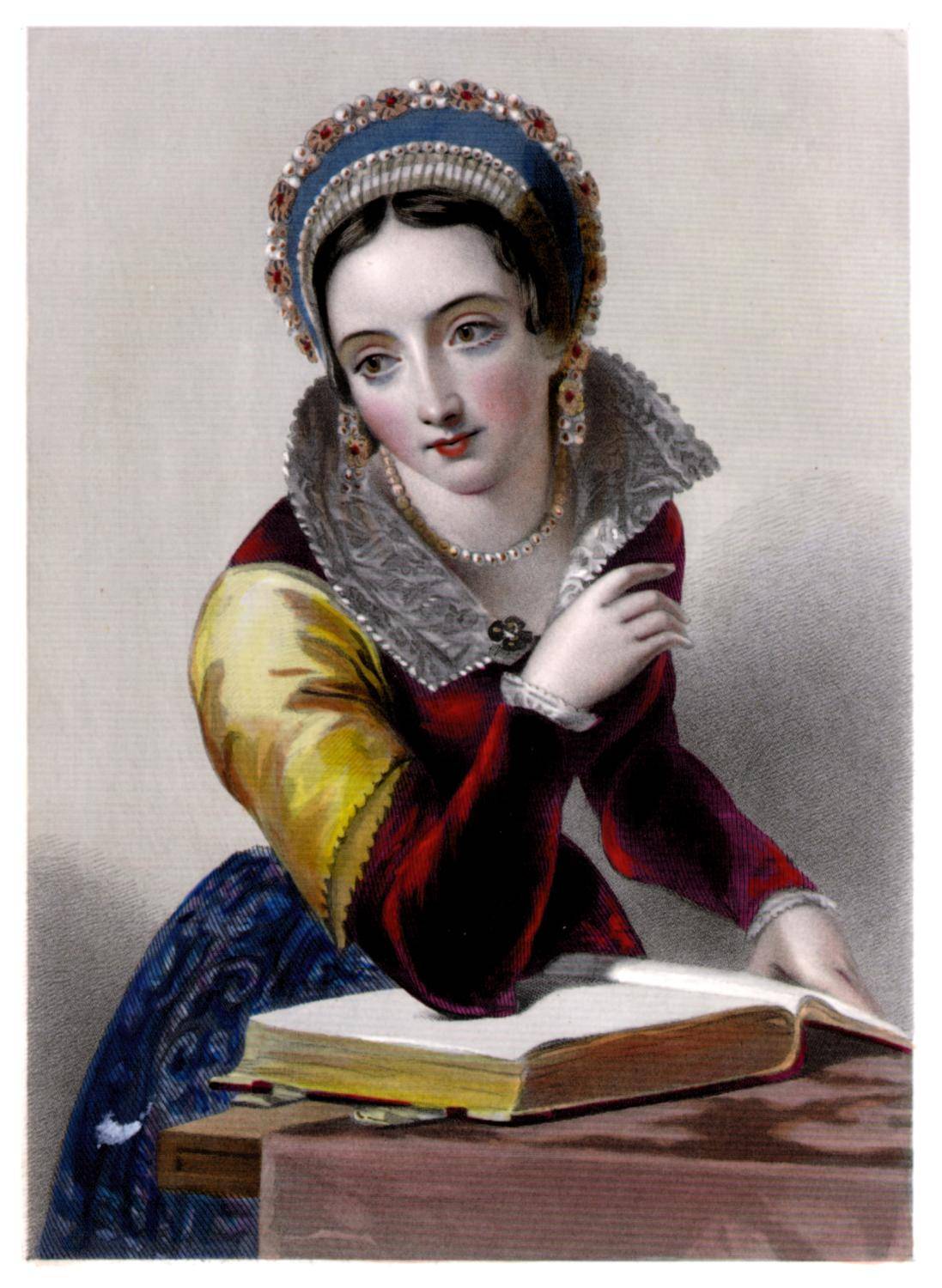
Source:www.britannica.com...
Joan of Navarre

In 1386 Joan was married to John IV (or V), duke of Brittany; they had eight children. John died in 1399, and Joan was regent for her son John V (or VI) until 1401. During his banishment (1398–99), the future Henry IV resided with Joan and the duke of Brittany, and strong affections developed between Henry and Joan. Following her husband’s death in November 1399, Joan had a proxy marriage to Henry in April 1402; Henry returned to England with Joan in 1403, and they were formally married. The English disapproved of Henry’s French bride and distrusted Joan’s foreign favourites at Henry’s court. Many of the French likewise disapproved of the marriage. After Henry’s death in 1413, Joan received an annuity, but, because of an active anti-French policy in England, she was accused of witchcraft in 1419, imprisoned, and denied access to the revenue from her dowry. She was released in 1422, and the remainder of her life was uneventful.
Source:www.britannica.com...
reply to post by Chamberf=6
Hello there,
Anyone can make a pact with the devil....
I don't know about Robert Johnson -I read his story, very interesting- but I would not consider him royalty.
I think there was even a thread made about him here on ATS.
Hello there,
Anyone can make a pact with the devil....
I don't know about Robert Johnson -I read his story, very interesting- but I would not consider him royalty.
I think there was even a thread made about him here on ATS.
reply to post by Rainbowresidue
Interesting.
I'm of two minds about this. For the most part, I think that most witchcraft accusations fall into two camps - they were either women/men who were following an older, pagan faith tradition or they were simply eccentric members of their community whom the others found convenient to blame and get rid of for some reason.
However, when you start getting into the nobility, you start running into other conspiracies, specifically the idea that for a very long time, a Satanic/occult breeding program has been taking place among the old nobility in Europe with the idea of eventually establishing a NWO.
There is also the Merovingian ideas which posit that Christ's bloodline has also existed in the old nobility which would be another reason to remove them with accusations of witchcraft in an attempt to kill it off.
In short, things start getting much more complicated when you start injecting nobility although the easiest explanation is that mostly, they were just being removed for the sake of convenience. You know, Occam's razor.
Interesting.
I'm of two minds about this. For the most part, I think that most witchcraft accusations fall into two camps - they were either women/men who were following an older, pagan faith tradition or they were simply eccentric members of their community whom the others found convenient to blame and get rid of for some reason.
However, when you start getting into the nobility, you start running into other conspiracies, specifically the idea that for a very long time, a Satanic/occult breeding program has been taking place among the old nobility in Europe with the idea of eventually establishing a NWO.
There is also the Merovingian ideas which posit that Christ's bloodline has also existed in the old nobility which would be another reason to remove them with accusations of witchcraft in an attempt to kill it off.
In short, things start getting much more complicated when you start injecting nobility although the easiest explanation is that mostly, they were just being removed for the sake of convenience. You know, Occam's razor.
Witches or victims?
Both are one in the same in my estimation. Those withces... if they were such, were victims of the establishment. Some people are born with extrodinary abilities - but they're still just people. Why should they be persecuted against simply because they are different from the majority?
Generally, it's those people who were called witches and burned thereof because of their witchery - that move society consciously. Look - they are still doing it today!
CdT
Both are one in the same in my estimation. Those withces... if they were such, were victims of the establishment. Some people are born with extrodinary abilities - but they're still just people. Why should they be persecuted against simply because they are different from the majority?
Generally, it's those people who were called witches and burned thereof because of their witchery - that move society consciously. Look - they are still doing it today!
CdT
new topics
-
Just learned a really helpful trick for internet searches
Computer Help: 40 minutes ago -
Not off to a good start
General Chit Chat: 2 hours ago -
If they can see...they can read!!
Rant: 9 hours ago
top topics
-
Tesla Cybertruck Explodes in Front of Trump Hotel in Las Vegas
Mainstream News: 15 hours ago, 19 flags -
If they can see...they can read!!
Rant: 9 hours ago, 7 flags -
Maybe they didn't get away with it: The Lincoln-Kennedy assassination parallels. 7 sentences long.
History: 17 hours ago, 4 flags -
Not off to a good start
General Chit Chat: 2 hours ago, 2 flags -
Just learned a really helpful trick for internet searches
Computer Help: 40 minutes ago, 0 flags
active topics
-
If they can see...they can read!!
Rant • 15 • : Flyingclaydisk -
How we've changed in 100 years
Ancient & Lost Civilizations • 20 • : Skinnerbot -
Vehicle Strikes people in New Orleans
Mainstream News • 248 • : Flyingclaydisk -
The C.D.C. Says There Was NO INFLUENZA Worth Reporting for the 2020-2021 Flu Season.
Diseases and Pandemics • 88 • : network dude -
Just learned a really helpful trick for internet searches
Computer Help • 0 • : Flyingclaydisk -
Not off to a good start
General Chit Chat • 3 • : billxam1 -
DONALD J. TRUMP - TIME's Most Extraordinary Person of the Year 2024.
Mainstream News • 43 • : Imhere -
Tesla Cybertruck Explodes in Front of Trump Hotel in Las Vegas
Mainstream News • 58 • : Flyingclaydisk -
Mood Music Part VI
Music • 3774 • : Hellmutt -
SCOTUS Chief Justice JOHN ROBERTS Ends 2024 Describing His Fears for Safety of U.S. Judges.
Above Politics • 11 • : WeMustCare
9

